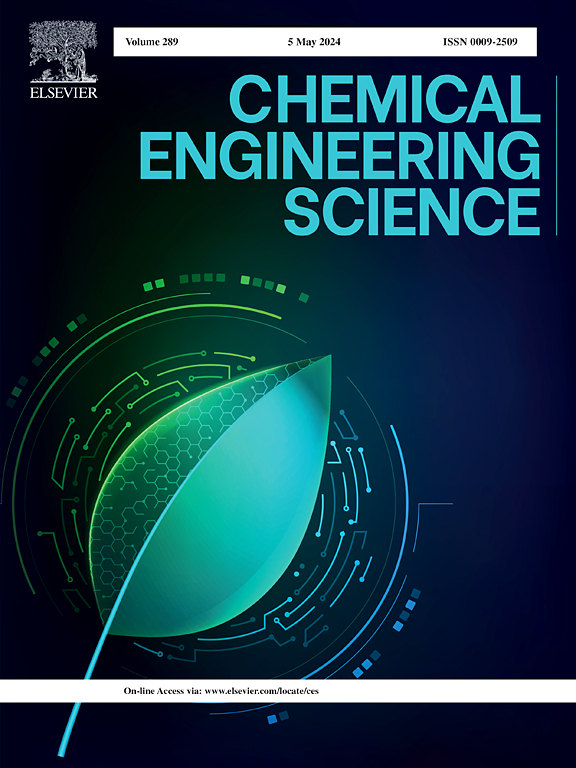基于滴管反应器的实验与分子动力学模拟相结合,揭示不同气氛下煤气化过程中烟尘的形成机理
IF 4.1
2区 工程技术
Q2 ENGINEERING, CHEMICAL
引用次数: 0
摘要
煤烟是煤气化细渣夹带流的重要组成部分,了解其形成规律对有效利用细渣中残余碳具有重要意义。本研究对煤进行快速热解实验,采用落管式反应器对煤烟进行捕集。结合ReaxFF分子动力学,从微观层面解释了烟尘的形成机理。随着停留时间的增加,烟尘由絮状结构逐渐转变为规则的球形结构,石墨化程度提高,氧化活性降低。CO2高温裂解产生的CO和H2O分解产生的OH容易与煤烟前驱体结合,抑制其成核过程,导致形成的煤烟成熟度低于惰性气氛。该研究对煤夹带流气化残余碳的类型和形成机制提供了重要的认识。本文章由计算机程序翻译,如有差异,请以英文原文为准。
Experiments integrated with molecular dynamics simulations for revealing the soot formation mechanism during coal gasification under different atmospheres based on drop tube reactor
Soot is an important part of the entrained flow coal gasification fine slag, and it is significant to understand its formation for the efficient utilization of residual carbon in fine slag. In this study, coal rapid pyrolysis experiments were conducted, and soot was captured using drop tube reactor. Soot formation mechanism was explained at microscopic level in combination with ReaxFF molecular dynamics. An increase in residence time induces the soot to gradually change from flocculent structure to regular spherical structure, with increased graphitization and reduced oxidizing activity. CO produced by high-temperature cracking of CO2 and OH produced by the decomposition of H2O is easy to combine with the precursor of soot to inhibit its nucleation process, resulting in lower maturity of the formed soot compared with that in inert atmosphere. This study provides important insights into the types and formation mechanisms of residual carbon in entrained flow coal gasification.
求助全文
通过发布文献求助,成功后即可免费获取论文全文。
去求助
来源期刊

Chemical Engineering Science
工程技术-工程:化工
CiteScore
7.50
自引率
8.50%
发文量
1025
审稿时长
50 days
期刊介绍:
Chemical engineering enables the transformation of natural resources and energy into useful products for society. It draws on and applies natural sciences, mathematics and economics, and has developed fundamental engineering science that underpins the discipline.
Chemical Engineering Science (CES) has been publishing papers on the fundamentals of chemical engineering since 1951. CES is the platform where the most significant advances in the discipline have ever since been published. Chemical Engineering Science has accompanied and sustained chemical engineering through its development into the vibrant and broad scientific discipline it is today.
 求助内容:
求助内容: 应助结果提醒方式:
应助结果提醒方式:


